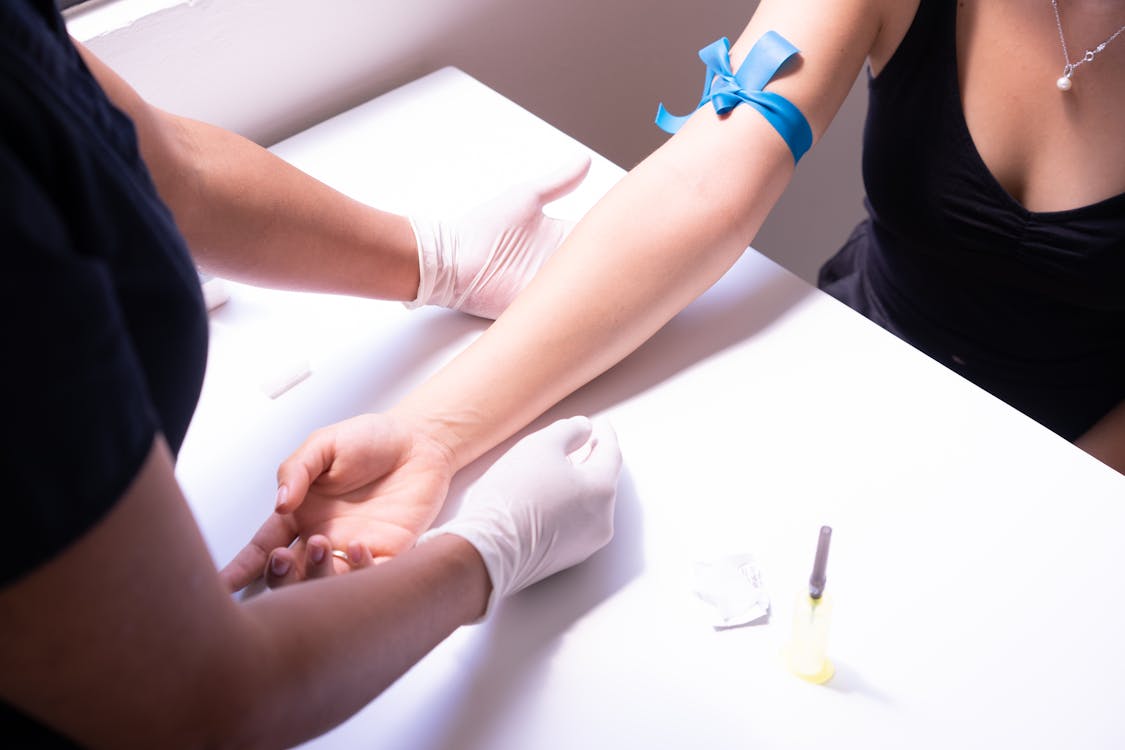
Key Points:
- Employment for phlebotomists is expected to grow by 10% over the next 10 years
- Phlebotomy classes can last anywhere from a few weeks to two years depending on the program
- Phlebotomists work in a wide range of healthcare settings
- Phlebotomists should consider getting certified in order to improve job prospects
Phlebotomy is a critical and rewarding career in healthcare that involves collecting blood samples from patients for laboratory analysis. Phlebotomists play a crucial role in the healthcare system, as they help diagnose diseases and monitor treatments by collecting and analyzing blood specimens. With the increasing demand for healthcare services, the need for qualified phlebotomists has never been greater.
Phlebotomy is an excellent career option for individuals who enjoy working with people and want to make a meaningful contribution to the healthcare industry. As a phlebotomist, you’ll work closely with patients, doctors, and other healthcare professionals. You’ll need to be highly skilled in collecting blood samples while ensuring the safety and comfort of your patients. Their on-the-job duties include:
- Identifying patients and verifying patient information
- Explaining the blood collection process to patients and answering any questions
- Selecting the appropriate blood collection technique
- Performing venipuncture or skin puncture to obtain blood samples
- Labeling and handling blood samples appropriately
- Transporting blood specimens to the laboratory for analysis
In this post, we will outline the education and training required to become a phlebotomist, the essential skills and qualities necessary for success in this career, the job duties and responsibilities of a phlebotomist, and tips for finding employment in this field. We hope you’ll have a better understanding of what it takes to become a successful phlebotomist and why it’s a fulfilling career choice.
Educational Requirements for becoming a Phlebotomist
To become a phlebotomist, you need to have a high school diploma or equivalent and be at least 18 years old to start phlebotomy classes, which are a necessary requirement for becoming a phlebotomist.
Some employers may require an associate’s degree or post-secondary training in phlebotomy or a related field. In general, the education requirement for phlebotomists is relatively low compared to other healthcare careers, making it an accessible entry point to the healthcare industry.
Types of Phlebotomy Programs
Finding phlebotomy classes near you is relatively easy as they are offered by a wide range of organizations including private vocational schools, community colleges, universities, and healthcare facilities. The three types of programs available are:
- Certificate programs: Classes typically take a few weeks to a few months to complete and focus solely on phlebotomy skills and knowledge. The skills learned will be limited to specific venipuncture procedures, but these programs allow students to enter the workforce quickly, and often meet the minimum requirements for many phlebotomy certification providers.
- Diploma programs: These programs are usually more extensive and include additional coursework in medical terminology, anatomy, and physiology. These programs may offer CPR certification, EKG, or medical assistant training as a part of their programs, allowing students to pursue a wider range of employment opportunities post-graduation. Diploma programs usually take 6-12 months to complete.
- Associate’s degree programs: These programs take two years to complete and provide a more comprehensive education in phlebotomy and other healthcare fields. Many phlebotomists who work as lab techs at clinical testing facilities, or in education or managerial positions are required to have an associate’s degree.
Phlebotomy Certification Requirements
Certification is not required to work as a phlebotomist, but it can improve job prospects and earning potential. There are many different types of phlebotomy certifications one can pursue after completing phlebotomy classes, but the two most widely recognized phlebotomy certifications are from the National Healthcareer Association (CPT-NHA) and the National Center for Competency Testing (NCCT). Many of these certifications have continuing education requirements and the certifications expire every 1-2 years.
When applying to phlebotomy programs, ask about how they help their students achieve certification in the form of test preparation services and meeting certification requirements through their class and clinical hours.
Skills and Knowledge Acquired Through Training
Phlebotomy training programs cover a range of topics, including:
- Anatomy and physiology of the circulatory system
- Medical terminology related to phlebotomy
- Blood collection techniques
- Safety protocols for blood collection
- Patient communication and education
- Specimen processing and handling
- Quality control and assurance
Duration of Phlebotomy Classes
Phlebotomy programs vary in length depending on the type of program. Certificate programs typically take a few weeks to a few months to complete, while diploma programs take 6-12 months. Associate’s degree programs take two years to complete, but they provide a more comprehensive education in phlebotomy and other healthcare fields.
Program duration can also depend on the class schedule. Most programs provide classes 4-5 days a week for 4-8 hours per day, but others operate only on weekends or in the evening, which can impact the length of the program.
Job Prospects for Phlebotomists
According to the U.S. Bureau of Labor Statistics, employment of phlebotomists is projected to grow 10% percent from 2021 to 2031, which is faster than the average for all occupations. This growth is driven by the aging population, which will require more medical services, including blood tests. Additionally, advances in medical technology and the increasing importance of laboratory tests in healthcare settings will also contribute to job growth.
Phlebotomists can work in various healthcare settings, including hospitals, clinics, medical and diagnostic laboratories, blood banks, and physician’s offices. Hospitals employ the largest number of phlebotomists, followed by laboratories and physician’s offices.
Tips for Finding Employment
To prepare a successful job application, phlebotomists should focus on creating a strong resume and cover letter that highlight their phlebotomy program of education, clinical training experiences, and work experience (if applicable).
Candidates should always highlight any phlebotomy certifications achieved at the top of the resume and/or cover letter, as well as other certifications or skills that may help them stand out from other candidates.The
The resume should be well-organized, include relevant keywords and phrases, and be tailored to the specific job requirements. The cover letter should be concise and emphasize the phlebotomist’s skills and qualifications for the job. Additionally, practicing interview skills, researching the potential employer, and preparing answers to common interview questions can increase the chances of success.
Building relationships with other phlebotomists can also help to expand your professional network, learn about job openings, and get referrals for job opportunities. You can network with other phlebotomists in the following ways:
- Join professional organizations and attend their conferences, seminars, and other events
- Attend local Meetings and conferences hosted by hospitals, laboratories, or clinics
- Use Social Media to join professional online groups and pages related to phlebotomy
- Volunteer at blood drives, health fairs, or other healthcare events
- Maintain relationships with your phlebotomy training program, coworkers, and other workplace professionals
Conclusion
Becoming a phlebotomist is a great career choice for anyone interested in the healthcare industry, working with people, and making a meaningful contribution to society. The education requirement for phlebotomists is relatively low compared to other healthcare careers, and there are various types of programs available to choose from, depending on your goals and schedule. Obtaining certification can improve job prospects and earning potential. Phlebotomists work in a wide range of healthcare settings, and with employment expected to grow by 10% over the next ten years, the need for qualified phlebotomists has never been greater. By choosing to become a phlebotomist, you’ll play a crucial role in diagnosing diseases and monitoring treatments, and you’ll be an essential member of the healthcare team.





